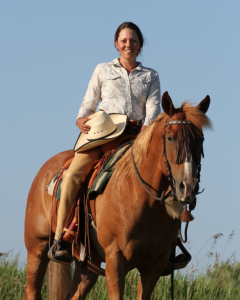
Amy Skinner
Editor’s Note: Amy Skinner is a regular guest columnist and has been a horse gal since age six. She works with owner/operator Jim Thomas as a trainer at Bar T Horsemanship where she rides and teaches English and Western. Skinner has studied at the Royal Andalusian School of Equestrian Art in Spain, with Buck Brannaman, Leslie Desmond, Brent Graef, and many others.
With Katrin Silva, she will present in the arena at the 2018 Best Horse Practices Summit in Durango, Colorado.
Skinner writes:
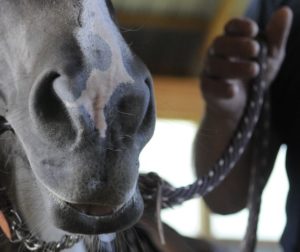 Lately, one of the things I’ve found to be most important in my riding work is a horse’s mental engagement. It’s more important than any physical quality,because I’ve found that if the horse’s mind is engaged, his body will willingly follow through with that task.
Lately, one of the things I’ve found to be most important in my riding work is a horse’s mental engagement. It’s more important than any physical quality,because I’ve found that if the horse’s mind is engaged, his body will willingly follow through with that task.
For example:
- If a horse is thinking about going right, his body will follow through on the shape of a circle to the right with minimal effort from the rider’s body.
- If the horse is thinking about going to the gate instead of to the right, as many riders can attest to, moving right will take significantly more effort. The horse won’t display the same degree of freedom in his body while carrying out this task.
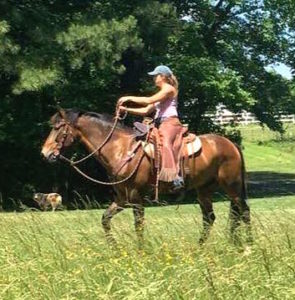 A simple way to understand mental engagement is to compare riding away from the barn on a straight line to riding back to the barn on a straight line. Most folks will find riding walking away from it feels like moving with a drunken sailor. When heading back to the barn, though, their horse is as straight as a laser beam. This is because of your horse’s mental engagement. If the horse can think on a task, he can easily carry it out with fluidity in his body.
A simple way to understand mental engagement is to compare riding away from the barn on a straight line to riding back to the barn on a straight line. Most folks will find riding walking away from it feels like moving with a drunken sailor. When heading back to the barn, though, their horse is as straight as a laser beam. This is because of your horse’s mental engagement. If the horse can think on a task, he can easily carry it out with fluidity in his body.
Without mental engagement, two common elements of riding can amount to wasted time and harmful outcomes: the Warm Up and Trail Riding.
It’s easy to spot a horse that’s in the habit of warming up without mental engagement:
- They lunge or round pen looking to the outside
- Their bodies are stiff and crooked
- Their rider is attempting to “get the bucks and sillies out” before riding.
When I was a kid, we lunged crazy thoroughbred hunter-jumpers until they were tired. Then, those horses were too tired to jump well. But they did became more fit! Then, of course, those horses required more lunging time. Yikes.
[Lunging and groundwork are often called the same thing. I don’t consider either useful without mental engagement. Simply moving a horse to “get the bucks out” is not productive.]
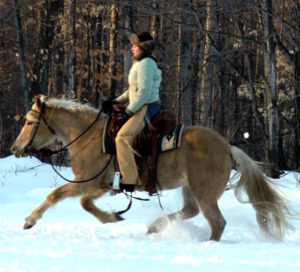 It’s more sensible to put energy toward something constructive. My ground work now focuses that “extra energy” on a task we need to perfect. Spooking, jigging, and other energetic behaviors can all be focused into creating rhythm and balance. Consider working on some lateral work or transitions, either on the ground or in the saddle.
It’s more sensible to put energy toward something constructive. My ground work now focuses that “extra energy” on a task we need to perfect. Spooking, jigging, and other energetic behaviors can all be focused into creating rhythm and balance. Consider working on some lateral work or transitions, either on the ground or in the saddle.
When my horse is relaxed and rhythmic through its body and is mentally engaged in what he’s doing, I’m ready to step on. Horses that are regularly lunged to expel energy without really being engaged take more time to engage their minds in warm ups, because they have no idea that they are expected to be involved in the process. If your warm-up doesn’t create a more relaxed, soft, and engaged horse, you’re wasting your time or you aren’t finished yet.
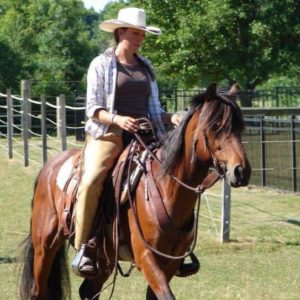 People often say to me, “my horse is tired of arena work. He needs a mental break on the trail.” The same theory of mental engagement applies on the trail, however. If your horse meanders down the trail with his own agenda and your mind in the clouds, it isn’t productive, and it isn’t “a break” and it could result in less than ideal consequences. Think of a trail ride as beautiful scenery for productive work. You can get just about anything done out there.
People often say to me, “my horse is tired of arena work. He needs a mental break on the trail.” The same theory of mental engagement applies on the trail, however. If your horse meanders down the trail with his own agenda and your mind in the clouds, it isn’t productive, and it isn’t “a break” and it could result in less than ideal consequences. Think of a trail ride as beautiful scenery for productive work. You can get just about anything done out there.
- Practice leg yields around trees or bushes
- Practice transitions up and down
- Back around natural obstacles
- Gallop. Walk. Jump fallen trees.
If you’re imaginative, you can create a lighter, more engaged horse on a trail ride. Or, unfortunately, you can create a duller horse that learns to disconnect from you.
There are so many opportunities to build a better connection to your horse. That doesn’t mean you need to micro-manage. But if you aren’t practicing togetherness in the small and less important moments, you won’t be able to draw from them when you need them.
Think of every moment as a deposit into a savings account that draws interest. Horses are extremely generous, and if you will just give a little, they will give back a lot.
Great article.
Love the article Amy, can’t wait for spring!Rob
Great article Amy! Thoughtful and spot on 🙂